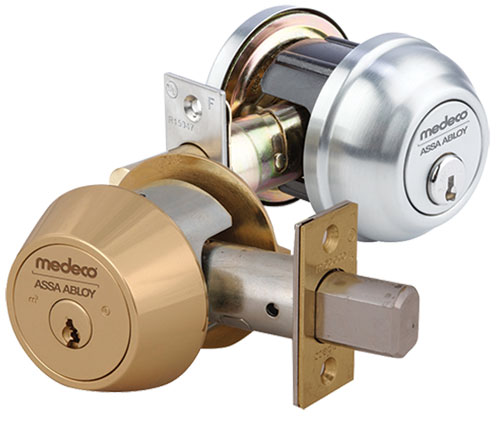Are Gas-Powered Airsoft Guns More Reliable Than Spring-Powered Ones?
Reliability is a crucial factor in airsoft that can directly impact the gameplay performance. Gas-powered and spring-powered guns are popular choices among the various types of airsoft guns. However, determining which type offers superior reliability requires comprehensively examining their mechanisms, maintenance requirements, and performance under different conditions. This blog post delves into the debate of whether gas-powered airsoft guns are more reliable than their spring-powered counterparts.
Understanding Gas-Powered Airsoft Guns:
Gas-powered airsoft guns use compressed gas, typically green or CO2, to propel BBs. These guns are known for their realistic blowback action, mimicking the recoil of real firearms, enhancing players’ immersive experience. Green Gas Airsoft Guns come in various configurations, including non-blowback and blowback models, each offering unique advantages and drawbacks.
Examining Spring-Powered Airsoft Guns:
On the other hand, spring-powered airsoft guns rely on a mechanical spring to propel BBs. These guns are often designed simpler than their gas-powered counterparts, with fewer moving parts. Spring guns are renowned for reliability in adverse conditions and minimal maintenance requirements. They are trendy among beginners and budget-conscious players due to their affordability and consistent performance.
Reliability Factors:
When evaluating the reliability of airsoft guns, several factors come into play:
Consistency: Gas-powered guns are lauded for their consistent muzzle velocity and accuracy, especially in semi-automatic or automatic modes. The regulated gas pressure ensures uniform performance over multiple shots, making them ideal for competitive play and skirmishes.
Maintenance Requirements: Gas-powered guns demand regular maintenance, including lubrication, gas cartridge replacement, and seal checks, to ensure optimal performance and prevent gas leaks. In contrast, spring-powered guns require minimal maintenance, primarily cleaning and occasional lubrication of moving parts.
Durability: Gas-powered guns, especially those with blowback features, tend to have more intricate internal mechanisms susceptible to wear and tear over time. With their simpler design, Spring-powered guns are often more durable and resilient to rough handling and prolonged use.
Power Source Availability: Gas-powered airsoft guns rely on consumable gas cartridges, which may not be readily available in certain locations or during extended gameplay sessions. Spring-powered guns, operating solely on mechanical spring tension, eliminate the need for external power sources, ensuring continuous operation regardless of circumstances.
Field Maintenance: Gas-powered airsoft guns often require on-the-field maintenance, such as refilling gas cartridges and addressing minor issues like gas leaks or misfeeds. In contrast, spring-powered guns seldom encounter field-related issues, allowing players to focus more on gameplay rather than troubleshooting technical issues.
Longevity of Components: Gas-powered airsoft guns may experience wear and tear on internal components such as seals, valves, and blowback mechanisms, requiring periodic replacement or repair to maintain optimal performance. With their simpler mechanisms, spring-powered guns tend to have longer-lasting components and may require fewer part replacements over time.
Adaptability to Different Playstyles: Gas-powered airsoft guns offer versatility in customization and adaptability to various playstyles, thanks to their compatibility with aftermarket upgrades and accessories. While less customizable, spring-powered guns excel in scenarios where stealth and precision shooting are paramount, such as sniping or reconnaissance missions.
Cost of Ownership: While initial purchase costs may vary, the long-term cost of ownership should also be considered. Gas-powered airsoft guns typically incur additional expenses for consumable gas cartridges and maintenance supplies, potentially outweighing the initial investment over time. With their low maintenance requirements and independence from external power sources, Spring-powered guns offer a more economical option for budget-conscious players in the long run.
Performance Comparison:
In controlled environments, such as indoor arenas or regulated competitions, gas-powered airsoft guns demonstrate superior performance in terms of rate of fire, trigger response, and overall shooting experience. The realistic blowback action adds to the immersion and satisfaction of using these guns on the field.
However, spring-powered airsoft guns shine with unwavering reliability and consistent performance in outdoor settings or scenarios with unpredictable weather conditions. Players can rely on spring guns to deliver consistent muzzle velocity and accuracy without concerns about gas pressure fluctuations or mechanical failures.
Conclusion
In the debate over reliability between gas-powered and spring-powered airsoft guns, the answer ultimately depends on the context of use and individual preferences. Gas-powered guns excel in controlled environments, offering enhanced realism and performance, albeit with higher maintenance requirements and susceptibility to environmental factors. On the other hand, spring-powered guns provide unmatched reliability and simplicity, making them ideal for outdoor play and beginner-friendly setups.
Ultimately, both types of airsoft guns have their strengths and weaknesses, and the choice between them boils down to personal preferences, playing style, and intended usage. Whether you prioritize realism, consistency, or durability, selecting the right airsoft gun can significantly impact your gameplay experience. So, the next time you’re gearing up for an airsoft skirmish, consider the reliability factor and choose wisely to ensure an exhilarating and trouble-free gaming session.











